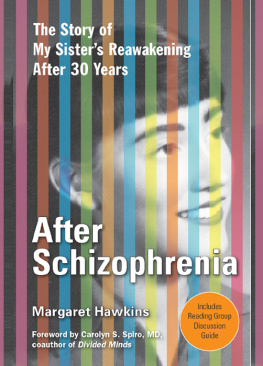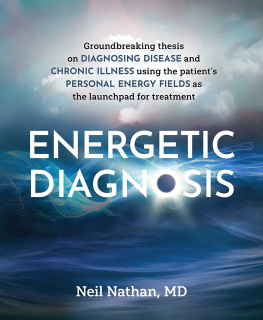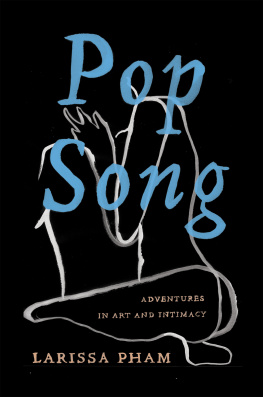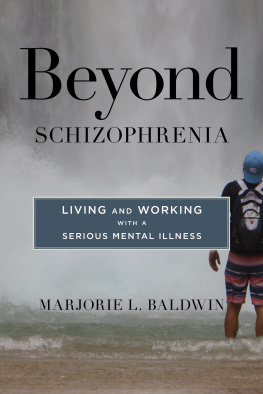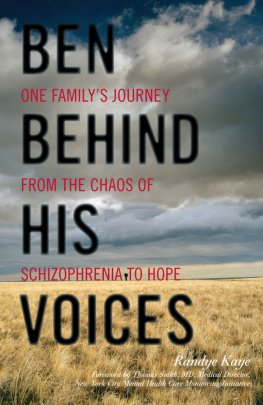THE
COLLECTED
SCHIZOPHRENIAS
ESSAYS
ESM WEIJUN WANG
Graywolf Press
Copyright 2019 by Esm Weijun Wang
The author and Graywolf Press have provided this e-book to you for your personal use only. You may not make this e-book publicly available in any way. Copyright infringement is against the law. If you believe the copy of this e-book you are reading infringes on the authors copyright, please notify Graywolf Press at: us.macmillanusa.com/piracy.
Essays in this collection appeared originally in different form in the following publications:
Toward a Pathology of the Possessed in the Believer
High-Functioning in Buzzfeed Reader
The Choice of Children in Doll Hospital
Reality, On-Screen in the New Inquiry
Perdition Days in the Toast
LAppel du Vide in Hazlitt
This publication is made possible, in part, by the voters of Minnesota through a Minnesota State Arts Board Operating Support grant, thanks to a legislative appropriation from the arts and cultural heritage fund, and a grant from the Wells Fargo Foundation. Significant support has also been provided by the National Endowment for the Arts, Target, the McKnight Foundation, the Lannan Foundation, the Amazon Literary Partnership, and other generous contributions from foundations, corporations, and individuals. To these organizations and individuals we offer our heartfelt thanks.

Published by Graywolf Press
250 Third Avenue North, Suite 600
Minneapolis, Minnesota 55401
All rights reserved.
www.graywolfpress.org
Published in the United States of America
ISBN 978-1-55597-827-3
Ebook ISBN 978-1-55597-876-1
2 4 6 8 9 7 5 3 1
First Graywolf Printing, 2019
Library of Congress Control Number: 2018947092
Cover design: Kimberly Glyder
Cover art: Shutterstock
for Chris
&
for everyone who has been touched by the schizophrenias
Recovery [from schizophrenia], almost never complete, runs the gamut from a level tolerable to society to one that may not require permanent hospitalization but in fact does not allow even the semblance of normal life. More than any symptom, the defining characteristic of the illness is the profound feeling of incomprehensibility and inaccessibility that sufferers provoke in other people.
Sylvia Nasar, A Beautiful Mind
How can I go on this way?
And how can I not?
Susan Sontag
THE
COLLECTED
SCHIZOPHRENIAS
Diagnosis
Schizophrenia terrifies. It is the archetypal disorder of lunacy. Craziness scares us because we are creatures who long for structure and sense; we divide the interminable days into years, months, and weeks. We hope for ways to corral and control bad fortune, illness, unhappiness, discomfort, and deathall inevitable outcomes that we pretend are anything but. And still, the fight against entropy seems wildly futile in the face of schizophrenia, which shirks reality in favor of its own internal logic.
People speak of schizophrenics as though they were dead without being dead, gone in the eyes of those around them. Schizophrenics are victims of the Russian word ( gibel ), which is synonymous with doom and catastrophenot necessarily death nor suicide, but a ruinous cessation of existence; we deteriorate in a way that is painful for others. Psychoanalyst Christopher Bollas defines schizophrenic presence as the psychodynamic experience of being with [a schizophrenic] who has seemingly crossed over from the human world to the non-human environment, because other human catastrophes can bear the weight of human narrativewar, kidnapping, deathbut schizophrenias built-in chaos resists sense. Both gibel and schizophrenic presence address the suffering of those who are adjacent to the one who is suffering in the first place.
Because the schizophrenic does suffer. I have been psychically lost in a pitch-dark room. There is the ground, which may be nowhere other than immediately below my own numbed feet. Those foot-shaped anchors are the only trustworthy landmarks. If I make a wrong move, Ill have to face the gruesome consequence. In this bleak abyss the key is to not be afraid, because fear, though inevitable, only compounds the awful feeling of being lost.
According to the National Institute of Mental Health (NIMH), schizophrenia afflicts 1.1 percent of the American adult population. The number grows when considering the full psychotic spectrum, also known as the schizophrenias: 0.3 percent are diagnosed with schizotypal personality disorder. I am aware of the implications of the word afflicts, which supports a neurotypical bias, but I also believe in the suffering of people diagnosed with the schizophrenias and our tormenting minds.
I was officially diagnosed with schizoaffective disorder, bipolar type eight years after experiencing my first hallucinations, back when I first suspected fresh hell in my brain. I remain surprised by how long it took. I was diagnosed with bipolar disorder in 2001, but heard my first auditory hallucinationa voicein 2005, in my early twenties. I knew enough about abnormal psychology to understand that people with bipolar disorder could experience symptoms of psychosis, but were not supposed to experience them outside of a mood episode. I communicated this to Dr. C, my psychiatrist at the time, but she never uttered the words schizoaffective disorder, even when I reported that I was dodging invisible demons on campus, and that Id watched a fully formed locomotive roar toward me before vanishing. I began to call these experiences sensory distortions, a phrase that Dr. C readily adopted in my presence instead of hallucinations, which was what they were.



